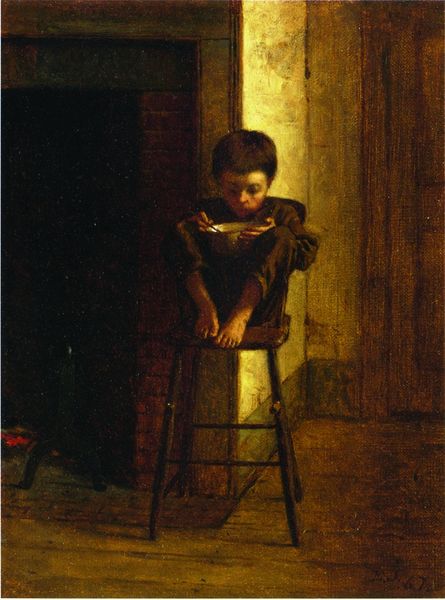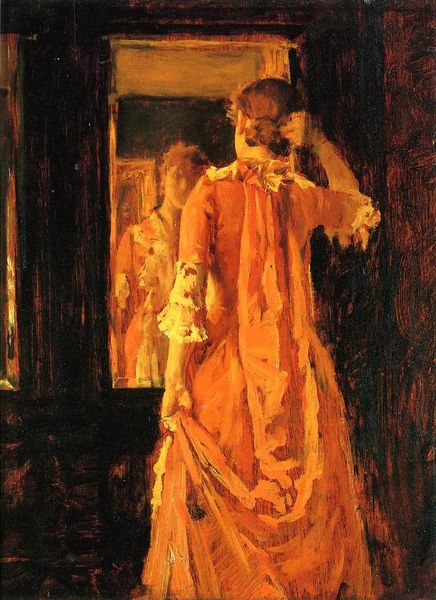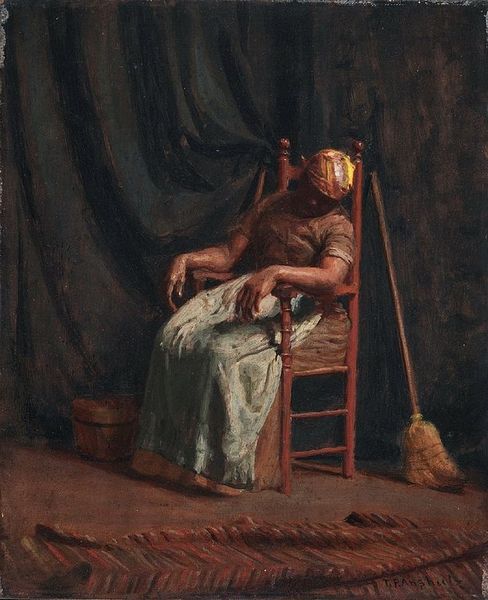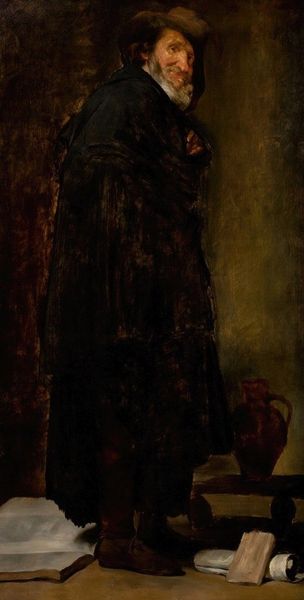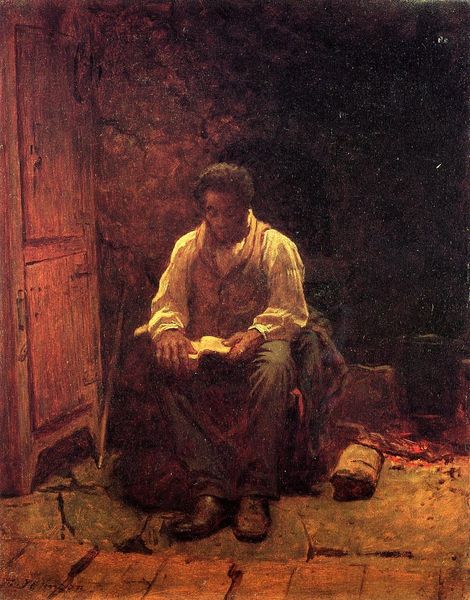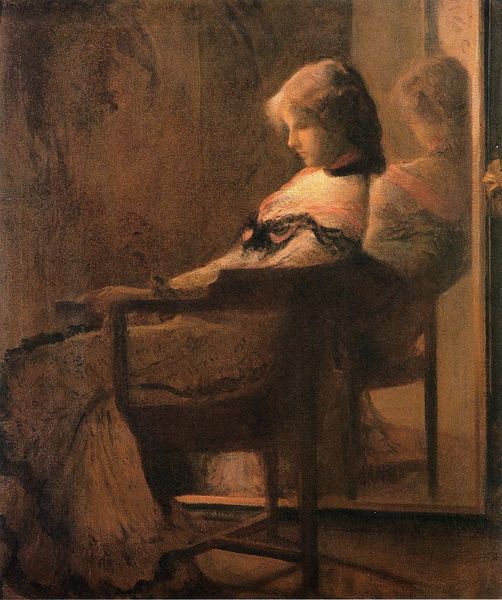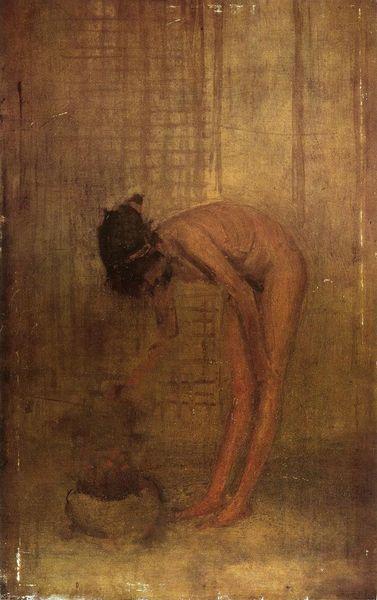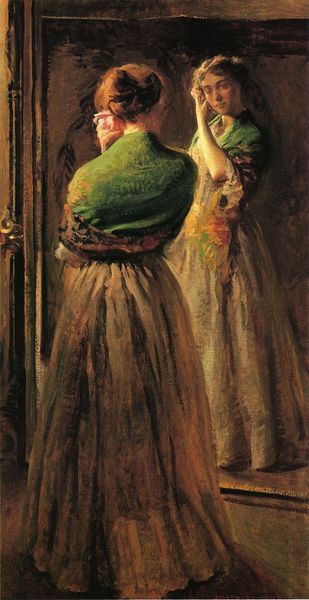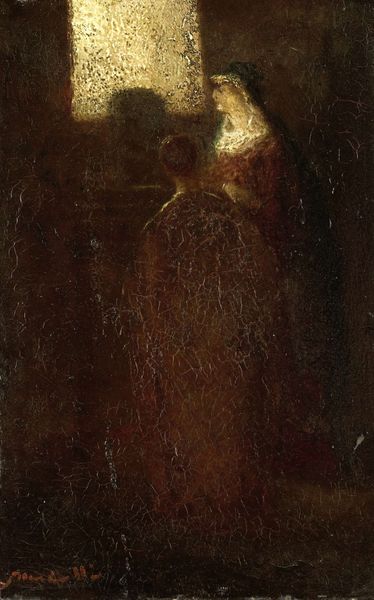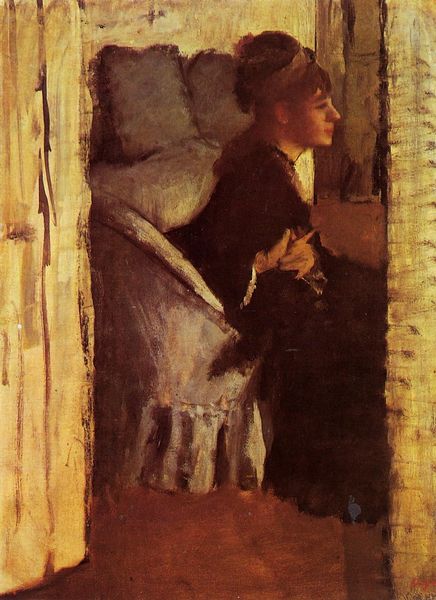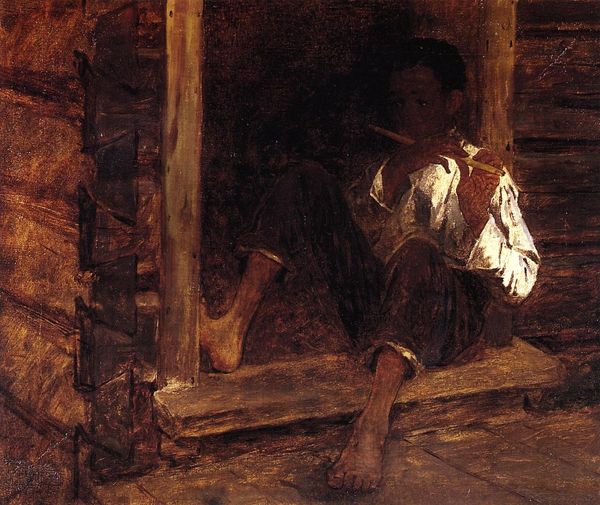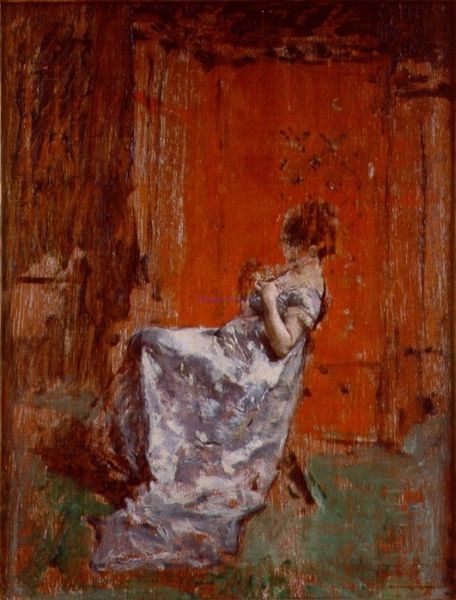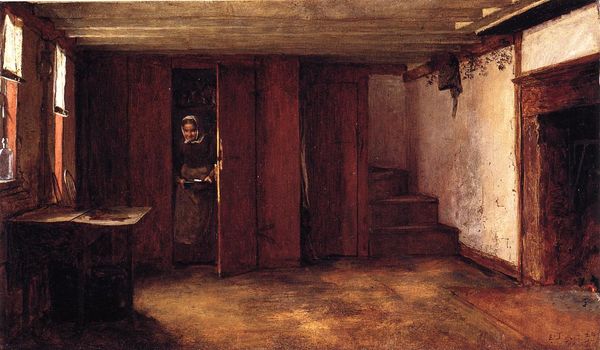
Copyright: Public domain
Curator: Here we have Eastman Johnson’s oil on canvas painting, "The Young Sweep," dating back to 1863. Editor: There's an undeniable gravity to it, isn't there? The figure, a young chimney sweep it seems, is rendered in almost monochromatic earth tones, conveying a sense of weariness that’s difficult to ignore. Curator: The canvas is thick with oil paint and applied with clear, visible brushstrokes that delineate the materials themselves. The grime of his trade, the roughness of the wooden door…all contribute to an honest representation of labor. Considering Johnson's position as an artist in Civil War-era America, how do you read this piece in relation to societal structures of that time? Editor: It’s a striking piece of social commentary, particularly given the period. The young sweep, who by the looks of his attire could easily have been enslaved or a free African American, embodies a larger narrative of marginalized labor. His isolation against that door, with the heavy bolt locking from within, could represent the constrained possibilities of the time. Curator: Precisely. And notice how Johnson deliberately draws our attention to the texture – the palpable weight of work shown by rendering details such as bare, dirty feet—forcing a dialogue about how different social bodies experience physical hardship, or what might be expected of labor. The composition invites examination into questions around what types of craft were recognized as art versus low wage. Editor: Right. It's fascinating how the romantic ideals of the era collide with the harsh realities reflected by the material culture depicted here, creating a nuanced narrative that acknowledges rather than idealizes. "The Young Sweep" captures an essential aspect of how socio-political forces permeate all parts of American experience—even into seemingly simple genre painting—transforming art into evidence and historical narrative. Curator: The way Johnson engages with Romanticism through a realist lens offers, perhaps, a glimpse into contemporary perspectives of labor. By carefully studying the canvas’ materiality, the techniques involved, one begins decoding those intricate codes between form and labor. Editor: Agreed. Looking at "The Young Sweep," it is hard not see in it evidence both the artist’s choices as much as its subject’s history made vividly present.
Comments
No comments
Be the first to comment and join the conversation on the ultimate creative platform.
